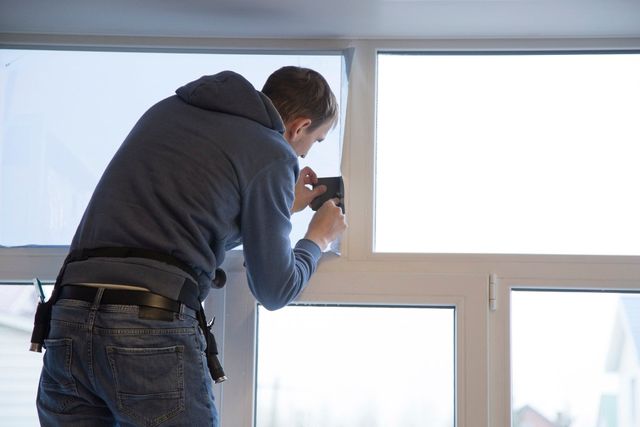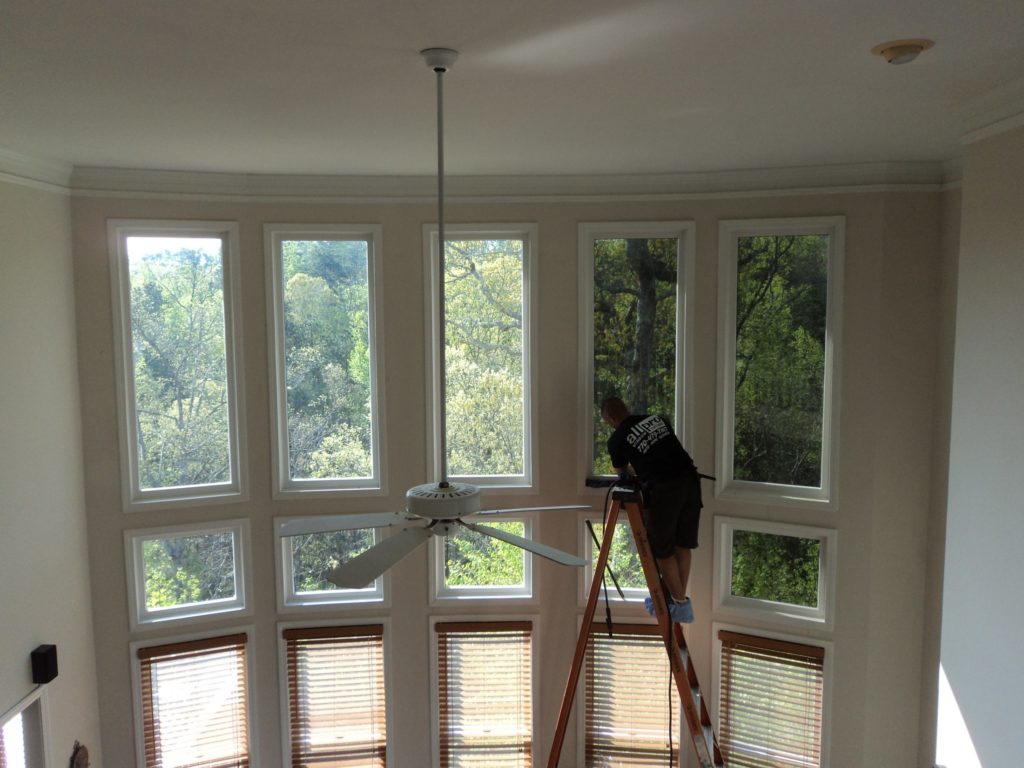Just How Residential Home Window Tinting Improves Your Home's Energy Performance
Residential window tinting provides a compelling service for home owners looking for to enhance power efficiency within their living rooms. By applying specialized films to windows, it successfully lowers heat transfer, consequently stabilizing interior temperature levels and decreasing the need for too much home heating or air conditioning. This not just reduces power usage but also provides a more comfy atmosphere by reducing glare. However, understanding the nuances of just how tinting jobs and picking the suitable type for your home can be pivotal. Strangely enough, what aspects should one think about before making this investment?
Understanding Home Window Tinting
Understanding home window tinting is crucial for property owners looking for to improve both convenience and power performance in their home. Residential Window Tint. Home window tinting entails the application of a thin movie to the interior or exterior surface area of glass home windows. This film can substantially modulate the quantity of sunlight and warmth that gets in a home, thus affecting interior environment conditions
There are numerous types of home window tinting films readily available, each with distinct homes. The performance of window tinting is frequently measured by its Visible Light Transmission (VLT) percent, which suggests just how much light can pass via the film.
Advantages of Power Effectiveness
Window tinting not just improves aesthetic appeals yet likewise plays a substantial function in enhancing energy effectiveness within property spaces. By lowering warmth transfer via home windows, tinted films create a more steady indoor climate, which can result in substantial reductions in power usage for home heating and air conditioning. This energy efficiency translates into lower energy expenses, providing property owners with substantial long-term cost savings.

In addition, window tinting enhances the comfort of living rooms. By decreasing glow and blocking hazardous UV rays, tinted home windows produce an even more positive setting, which can bring about improved health for owners. The security versus UV rays likewise helps maintain furniture and flooring from fading, adding to the longevity of home things.
Exactly How Tinting Functions
Tinting movies run via a mix of innovative materials and innovations designed to control the quantity of solar power going into a home. Mostly composed of polyester, these films frequently incorporate metal or ceramic particles that soak up and next page mirror warmth. This dual capacity enables them to substantially minimize the penetration of ultraviolet (UV) rays and infrared radiation while allowing visible light to travel through.
The efficiency of window tinting is measured by its solar warmth gain coefficient (SHGC), which indicates just how much solar power is transmitted via the window. Reduced SHGC worths are more suitable as they represent better warm rejection. In addition, home window colors can include a selection of tones, permitting property owners to tailor their visual choices while boosting power performance.
Additionally, these films serve as an obstacle, stopping heat loss during colder months by reflecting indoor warmth back right into the home. This thermal insulation result matches the air conditioning benefits obtained throughout warmer months, contributing to a well balanced indoor climate year-round. By taking care of solar power successfully, residential window tinting not only boosts comfort yet also plays an essential function in lowering energy usage and lowering utility expenses.
Picking the Right Tint

There are various types of home window movies available, consisting of colored, metalized, and ceramic. Ceramic movies give excellent warm control without compromising exposure and are highly resilient, making them a preferred choice.
Visible light transmission (VLT) is an additional essential aspect, as it indicates the quantity of natural light that can travel through the tinted glass. Home owners should select a color with a VLT that complements their lights choices while still giving sufficient glare reduction.
Additionally, analyzing the solar warm gain coefficient (SHGC) can help figure out exactly how well a color can block heat from sunshine. A reduced SHGC shows better warmth control, eventually enhancing power performance.
Installation and Upkeep Tips
Proper setup and maintenance are crucial elements in making best use of the advantages of residential home window tinting. To accomplish optimum results, it is a good idea to hire a qualified expert for setup. This ensures that the tint is used appropriately, staying clear of air bubbles, wrinkles, or misalignment that can compromise efficiency. Professionals additionally utilize specialized devices and techniques, which can improve the resilience and efficiency of the color.
Complying with installment, maintenance is vital to prolong the life of the window movie. It is advised to wait at the very least 30 days prior to cleaning the colored windows to allow the sticky to heal fully.
Resolving these issues immediately can stop more damage and preserve power efficiency. By sticking to these installment and upkeep pointers, property owners can ensure their window tinting proceeds to provide considerable energy cost savings and convenience for years to come.
Final Thought
In verdict, household home window tinting serves as an effective service Continued for enhancing power performance within homes. By minimizing heat transfer and blocking hazardous UV rays, window films contribute to reduce power usage and boosted interior convenience.
Window tinting entails the application of a thin film to the interior or exterior surface of glass home windows. By minimizing warm transfer with home windows, tinted films develop a more secure indoor climate, which can lead to substantial reductions in energy intake for home heating and air conditioning.The effectiveness of home window tinting is measured by its solar warm gain coefficient (SHGC), which indicates how much solar energy is sent with the window. By managing solar power successfully, residential window tinting not only boosts convenience but also plays an essential role in decreasing energy usage and lowering energy expenses.
By minimizing warm transfer and obstructing damaging UV rays, home window movies add to lower energy usage and improved indoor convenience.
Comments on “Residential Window Tint: Improve Comfort and Lower Glow Indoors”